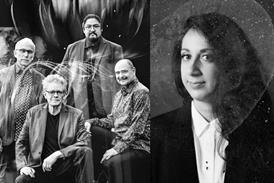- More from navigation items
- Home
- News
- For Subscribers
- Student Hub
- Playing Hub
- Podcast
- Lutherie
- Magazine
- Magazine archive
- Whether you're a player, maker, teacher or enthusiast, you'll find ideas and inspiration from leading artists, teachers and luthiers in our archive which features every issue published since January 2010 - available exclusively to subscribers. View the archive.
- Jobs
- Shop
- Directory
- Contact us
- Subscribe
- Competitions
- Reviews
- Debate
- Artists
- Accessories
Villa-Lobos and the cello: A voice for Brazil

Heitor Villa-Lobos began his musical career as a cellist and wrote numerous works for the instrument, including the monumental Second Cello Concerto. However, his primary interest lay in promoting the folk traditions of his Brazilian homeland rather than advancing the cello’s virtuoso repertoire, writes Felipe Avellar de Aquino
Born in Rio de Janeiro in 1887, Heitor Villa-Lobos is widely regarded as the most important Brazilian composer; he enjoyed great popularity during his lifetime both in his homeland and abroad. We know from concert programmes that he was performing as a cellist in orchestras and small chamber groups as early as age 15. In fact, he started his career as a cellist, playing in cafés and cinemas in order to make a living. This led him to compose a series of short works for cello and piano in his twenties, such as Capriccio (1915), Prelude no.2 (1913), Pequena Suite (‘Little Suite’ – 1913), Sonhar (‘To Dream’ – 1914), Berceuse (1915), Élégie (1916) and The Song of the Black Swan (1917). Establishing a solid career as a composer enabled him to build up firm industry connections and become one of the foremost musical figures in the Americas. It is perhaps a sign of his international reputation that the 1945 Fantasia for cello and orchestra was dedicated to Serge Koussevitzky. This work was premiered in Brazil in 1946 by Iberê Gomes Grosso; its first performance in the US was given in 1957 by Brazilian-born cellist Aldo Parisot (one of the leading cello pedagogues in the US, who taught both at Yale University and at the Juilliard School), with the New York Philharmonic’s Stadium Symphony Orchestra; and in 1988 it was recorded by János Starker with the Paraíba Symphony Orchestra under Koussevitzky disciple Eleazar de Carvalho…
Already subscribed? Please sign in
Subscribe to continue reading…
We’re delighted that you are enjoying our website. For a limited period, you can try an online subscription to The Strad completely free of charge.
* Issues and supplements are available as both print and digital editions. Online subscribers will only receive access to the digital versions.




























